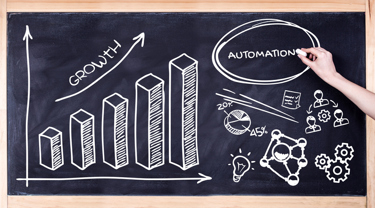Empowering Workforce Of The Future With Automation
By Heiko Mannherz, Avantra

The working practices have changed radically since the pandemic, but the movement toward hybrid working was already underway. To begin with, remote working was confined to certain limited and appropriate roles, but recent events precipitated an evolutionary leap. Remote working became an option through advances in technology and bandwidth, but it became desirable in the wake of the financial downturn and a necessity during a pandemic.
Now it can – and in many cases will – be the ‘new normal’ as predicted apart from customer-facing roles. Extramural work culture is developing at pace now, presenting new challenges and new opportunities. These can involve the changing roles of staff including managers whose relationship with a remote workforce and their output may take some adjustment and adaptation.
Roles In Flux
New roles have been opened by technology that are not exclusively office-based and these now include IT. The ‘always on’ availability of teams responsible for managing SAP systems for instance is no longer required.
The key to remote working is mobility, not a home office, but an office anywhere. So, as many of the functions of the office as possible can be executed from remote workstations. Some of those functions will, inevitably, be digital and what processes relating to data management, monitoring, and processing are not being fulfilled remotely now, will soon be, as that becomes possible securely and efficiently.
SAP operations often involve tedious manual effort. Experts need to be close to these systems, particularly in secure environments which can make these efforts even more hands on. This can be the same network or the same building. Automating SAP operations enables separation of the planning and scheduling of operations tasks from applying them.
So, SAP experts can do the preparatory work when they are in the office anyway, while the operations platform carries out the tasks at whatever time is scheduled. Furthermore, the same platform can perform the task regardless of where the SAP systems are located.
Refinement of technology to support and monitor systems constantly and remotely with appropriate safety checks can free up talent away from monotonous, repetitive actions or manual in-office checks for updates and alerts. This in turn creates a space for cognitive skills like creativity and innovation, the likely traits that will be much sought in the future workforce.
System monitoring technology has been developed a lot further than is sometimes realized even at the board level when decisions about staff deployment are made. Therefore, proper assessments about how people and technology interact smoothly are desirable in the context of an understanding of what both can give ongoing advances.
The growing security issues associated with overwhelming data quantities and the transition to the cloud are a burden that must be borne by someone or something. Increasingly it is technology that must do the predominant share guided by highly specialized teams with the support of systems to simplify mundane tasks, resolve issues as and when they occur, while unlocking a team’s particular talents and complementary strengths, and positively adjusting the work/life balance of staff accordingly.
The Trend Is Now
Digitizing of events has been one visible effect of the pandemic that isn’t going to go away, for example, and companies that had only ever sold through physical retail outlets have suddenly had to set up a whole supply chain and delivery networks and ditch old-school paper trails of print-out documentation in favor of digital. Retail is often assumed to be predominantly a physically face-to-face business, but the digital side of the industry is not confined to internet shopping, payment, and delivery logistics.
Three major trends are influencing the future of work. These are partly related to working practice changes because of the pandemic but were already underway to a certain extent anyway, albeit not at such speed.
Firstly, digital transformation is skyrocketing. Everyone is keen to automate their solutions with increasing investment in digital transformation.
Secondly, all-in compliance requirements are expanding. Regular audits of different kinds throughout the year can be time-consuming, plus regular SAP advisories highlighting serious issues must be dealt with.
Thirdly, it’s the move to the cloud, which continues apace and means, inevitably, a steady and unrelenting move away from physical infrastructure and old-style pre-transformational habits. Once in the cloud, automation can be a rolling snowball of innovation with a momentum not thought possible by an enterprise at the start of the process.
Way Forward
Remote working need not be anti-social or isolating, but raise efficiency while lowering costs, especially of the high costs of infrastructure. Company morale also can be enhanced by smooth operations and minimal stress brought about by advanced digital support alongside the means to work at arm’s length while maintaining fingertip control.
About The Author
Heiko Mannherz leads Avantra's Innovation Program as Chief Innovation Officer, working closely with the Product Development and Customer Office teams. Serving almost nineteen years at Avantra in many different roles, the broader view on new technologies and methodologies was always at the core of his work. Heiko holds an MSc in Mathematics from the University of Bonn.
